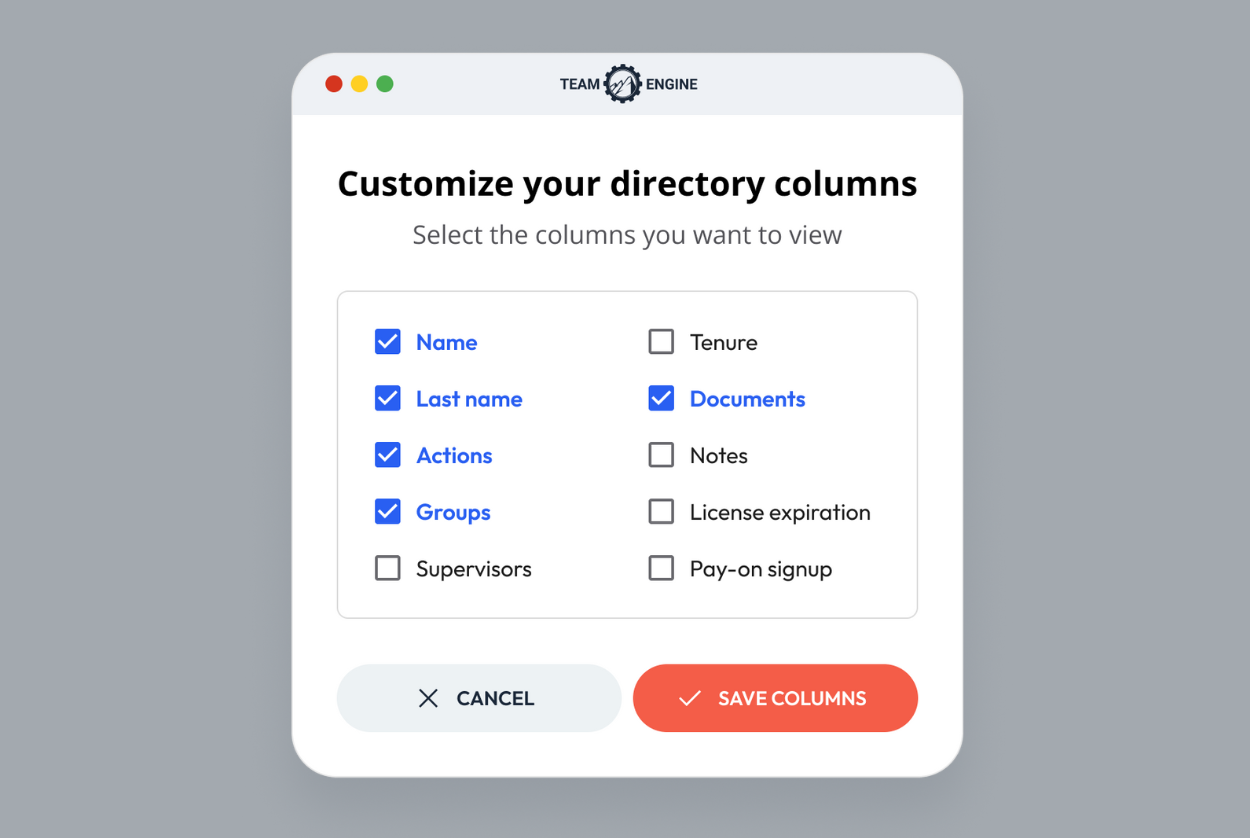
How New Pay Transparency Laws Can Combat the Labor Shortage
While revealing salary info may be uncomfortable, pay transparency laws can actually make it easier to attract & retain talent in a competitive hiring market.

With labor shortages still affecting industries across the nation, blue-collar fields like manufacturing and construction face a unique challenge to stay competitive in the hiring market. New pay transparency laws might just be their saving grace — not only do they help reduce disparities in employees' salaries, but they also create a framework for open and honest communication. This can help businesses retain talent and navigate the complex employment landscape. As more states pass similar legislation, HR teams should leverage these opportunities and prepare for what lies ahead. In this blog post, we’ll explore the most recent pay transparency laws as of 2024 and how these new regulations can support efforts to address the skilled labor shortage.
Understanding Pay Transparency Laws
For most of American history, employers have held more power in pay negotiations, as salary information was considered private and rarely discussed. However, this trend is shifting. With the aim of reducing wage gaps and discrimination, many states are enacting pay transparency laws that make salary information more accessible to job applicants and employees. These laws encourage open discussions around compensation, creating a more balanced negotiation process.
The specifics of these laws vary by state, but generally, they require employers to:
- Disclose the pay range for an open position at a specified point during the hiring process.
- Provide employees with the pay range for their role upon request, during transitions to new roles, or at the time of hire.
- Include the pay range in job postings.
The goal of these laws is simple: to protect employees from unequal pay and allow them to discuss salaries without fear of retaliation. Additionally, these laws foster discussions around compensation, giving employers a fair framework to compensate employees according to their skills and experience.
However, it’s important to note that these requirements can extend beyond simple salary disclosure. In some states, employers must announce promotion opportunities to all employees, so no one is overlooked for advancement. This element of “promotion transparency” ensures a more equitable path for employees seeking internal growth opportunities.
Current Pay Transparency Laws by State in 2025
.png)
Colorado was the first state to enforce pay transparency laws back in 2021. As of February 2025, there are 14 states with pay transparency laws on the books, including:
- California
- Colorado
- Connecticut
- Hawaii
- Illinois
- Maryland
- Massachusetts
- Minnesota
- Nevada
- New Jersey
- New York
- Rhode Island
- Vermont
- Washington
Each state's pay transparency laws are slightly different. Depending on where your business is located, you may need to adjust your HR procedures to be compliant with the respective regulations.
For example, in states like California, Connecticut, Maryland, Nevada, and Rhode Island, employers are legally obligated to share salary information when requested by a job candidate or automatically include it in their offer letter. While some states even require that you submit salary data to the state (California and Illinois being two of them).
Even if your state isn’t on this list just yet, it’s only a matter of time before pay transparency laws become the standard. And by being ahead of the curve, you can actually position your business to combat the labor shortage and reduce employee turnover.
Keep in mind that these laws may not apply universally to all employers; some have minimum employee thresholds or other qualifiers. For example, certain legislation only affects companies with a specific number of employees, while others might require posting full benefit and promotion details. Monitoring how each state approaches these nuances is crucial for multi-state employers.
Recent Updates for 2025
In Illinois, starting January 1, 2025, employers with 15 or more employees will need to include a pay range and a general description of benefits in job postings. They must also announce promotional opportunities to current employees within a specified timeframe.
In Minnesota, as of January 1, 2025, companies with at least 30 employees in the state are required to include a starting salary range (not an open-ended figure) in job ads, along with an overview of benefits and additional compensation.
New Jersey’s new rules take effect on June 1, 2025, obligating businesses with 10 or more employees to disclose a pay range and a basic description of benefits for any internal or external posting. Employers must also make “reasonable efforts” to inform current staff of promotional opportunities.
In Vermont, from July 1, 2025, employers with 5 or more workers must feature at least a minimum and maximum pay figure in any job advertisement tied to a Vermont-based role.
Massachusetts, beginning October 29, 2025, will require companies with 25 or more employees to provide a good-faith pay range for a listed role in job postings. This disclosure must also be given if an employee is offered a promotion or transfer.
Leveraging Salary Transparency in the Hiring Process

While revealing salary information may feel uncomfortable for some employers, pay transparency laws can actually make it easier to attract and retain talent in a competitive hiring market. And in skilled trades industries like manufacturing, construction, and home services, that’s exactly what’s needed.
Not only that but hiring managers will appreciate the time-savings that come with putting salary data out in the open — since it pre-qualifies candidates and creates a pool of applicants who are more likely to accept offers.
A LinkedIn study even found that over 90% of job seekers prefer applying for positions when the salary range is clearly indicated upfront. So it’s a win-win for businesses and job seekers.
By being transparent about salaries from the very start, employers can find better employees and build their workforce faster.
So consider proudly displaying salary and benefits details on:
- Recruiting materials
- Job posting on platforms like Indeed and ZipRecruiter
- Hiring advertisements
- Your website's "Careers" page
- Offer Letters
This can really set you apart from the competition, especially if they're still playing by the old rules.
What Is a Potential Disadvantage of Pay Transparency?
Everything comes with pros and cons, including the new laws related to pay transparency. For employers, the biggest disadvantage is that it can open you up to potential legal action if you fail to adhere to laws or regulations.
Pay transparency can also lead to tension and jealousy among employees if there’s a large discrepancy in salaries. That’s why it’s important to have clearly defined criteria for determining employee compensation before you start publicly disclosing salary details.
Another disadvantage is skepticism because of massive salary ranges (like $100,000 ranges and beyond). This can hurt the credibility of your recruitment process because it's really not "transparent" at all... Rather, it’s a way of avoiding disclosure. Candidates can sense that and are calling these companies out.
It's important to remember that while you may be required to share salary ranges, you could end up paying more or less than originally estimated to their eventual hire. So don't let the fear of pay transparency dissuade you from offering an honest range that you can stand behind.
It’s also worth noting that making compensation public doesn’t by itself fix deeper issues like wage inequity or favoritism. Pay transparency works best when combined with broader efforts to address bias, unfair promotion practices, and inconsistent access to development opportunities. Aligning transparency with a fair pay structure will help prevent ongoing tensions or claims of inequity.
Tips for Implementing Pay Transparency
1. Research Your Obligations
Before rolling out any pay transparency measures, confirm which state (or states) you operate in and whether you fall under a specific headcount threshold. Compliance starts with knowing what’s required in every location where you have employees.
2. Develop Clear Pay Structures
Work with HR, finance, and department leaders to craft well-defined compensation ranges for each role. Ensure your ranges reflect market rates and account for all forms of pay, such as bonuses or profit-sharing.
3. Train Managers and Communicate With Employees
Managers often handle compensation discussions and field employee questions, so they need to understand your company’s guidelines. This will also help them address any concerns about fairness or discrepancies.
4. Monitor and Adjust
Employee roles evolve, market conditions shift, and new laws may emerge. Plan to revisit your pay structures regularly, updating them to stay competitive and compliant with new regulations.
Streamlining Pay Transparency with Team Engine
One of the trickiest parts about adapting to pay transparency laws is navigating the additional manual tasks they bring with them. From preparing job postings to publishing them on job boards, to pre-screening, scheduling, and tracking applicants — these processes can take up valuable time that could be better spent on other tasks.
That’s where Team Engine comes in! Our suite of features is designed with skilled trades employers in mind, allowing you to automate the hiring process so you can focus on the more important parts of the job — like interviewing and onboarding candidates.
Team Engine can help you quickly:
- Post jobs to a range of job boards
- Sift through resumes
- Prescreen candidates
- Schedule interviews
- Track and follow up with applicants
- And much more!
Plus our analytics tools make it easy to monitor data and make more informed decisions about your hiring process.
So if your business is ready to embrace pay transparency, Team Engine can be the helping hand you need to get it done quickly and efficiently. Ready to give it a try? Sign up for a demo to give it a try today!




